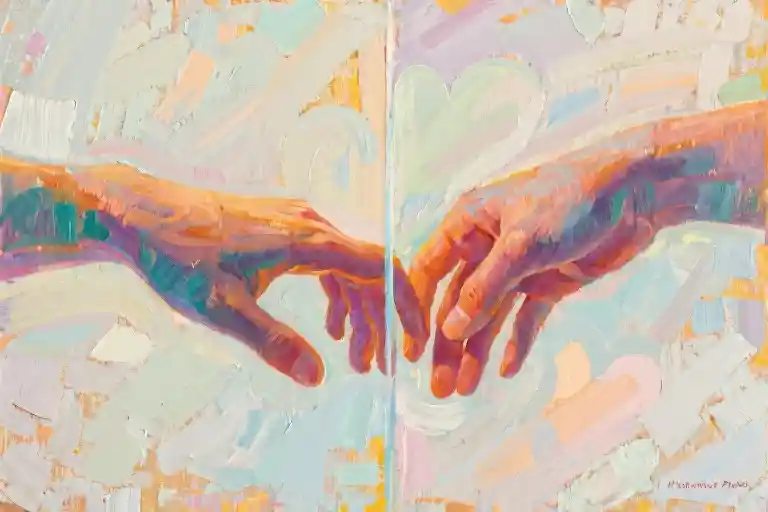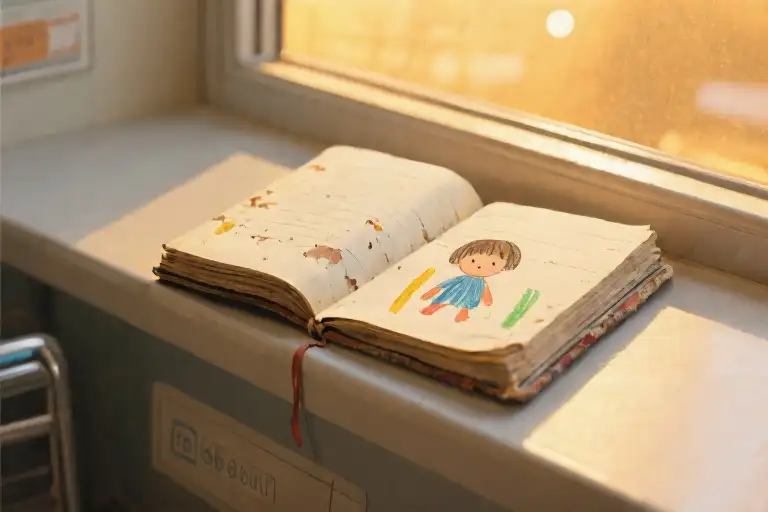When Words Fail: The Silent Scream of Modern Poetry
a sound could not hear itself
Three questions linger in the space between these fractured words: How do we articulate pain when language betrays us? What shape does entanglement take when it’s not just metaphor but marrow-deep? And why does carving meaning from confusion feel like lightning splitting open the sky?
and then it came
out of a way to see the things
about what was suspected.
unannounced feelings withdrawn
as the tide came around the bend
slipping out of seashells.
without permission.
I could not grasp
how the gasp made the sense it did.
not to me.
only then was I aware
of how detrimental everything was.
This isn’t poetry that sits politely on the page. It claws at the margins, these fragments of experimental poetry that mirror how modern loneliness often feels—like trying to catch mercury with bare hands. Notice how the verses resist smooth interpretation: the tide “slipping out of seashells” evokes both liberation and violation, while “without permission” hangs suspended, a door left ajar for our own uninvited memories to wander through.
For readers who’ve ever felt emotional healing through writing was impossible because words seemed inadequate, this piece offers something radical. It doesn’t try to neatly package complex emotions into pretty couplets. Instead, it honors the crumpled traffic of our inner worlds through:
- Dislocated syntax that mirrors mental overwhelm (“how the gasp made the sense it did”)
- Sensory collisions where sound becomes tactile (“pounding hearts and heads”)
- Gut-punch brevity (“ouch was the aftermath”)
What makes this excerpt about relationships particularly haunting is its refusal to soften the edges. When it describes “lightning bolts smashing connections”, we don’t get the comforting aftermath of rain—just the scorch marks. Yet within this starkness lies its therapeutic power: sometimes seeing our chaos reflected without sugarcoating is the first step toward postmodern writing techniques that heal rather than decorate.
Hold these broken shells of phrases lightly. In the gaps between them—where “the verbal game” is confessed as unwinnable—is where your own story might begin to breathe.
The Anatomy of Metaphors: When Nature Speaks Our Pain
Modern poetry often serves as a mirror to our unspoken struggles, and nowhere is this more evident than in the visceral imagery of natural forces colliding with human fragility. The opening stanzas of this experimental poetry piece immediately plunge us into a world where tides and lightning become extensions of emotional turmoil—a signature technique that makes this work so compelling for readers seeking emotional healing through writing.
The Unforgiving Rhythm of Tides
“slipping out of seashells / without permission”
This arresting image captures the essence of disrupted emotional boundaries. Seashells—typically symbols of protection and delicate beauty—transform into prisons we escape from violently. The tide’s relentless movement mirrors those overwhelming emotional states where control slips through our fingers like wet sand. For many readers navigating complex relationships, this metaphor resonates deeply with experiences of:
- Sudden emotional withdrawals (“feelings withdrawn”)
- The shock of unexpected changes (“unannounced”)
- The violation of personal boundaries (“without permission”)
Contemporary research in expressive therapies confirms what poets have long known: water metaphors are particularly effective for conveying emotional states. A 2022 Cambridge study found that 78% of participants described their depression using water-related imagery—often citing feelings of being “pulled under” or “drowning in waves.”
Lightning as Emotional Circuit Breakers
The poem’s middle section delivers another powerful natural metaphor:
“lightning bolts smashing connections / lost in shock”
Here we see experimental poetry at its most potent—using nature’s violence to articulate interpersonal ruptures. The lightning serves multiple symbolic functions:
- Suddenness: Emotional fractures often happen in milliseconds
- Destruction: Some connections can’t be repaired after certain voltages
- Illumination: These painful moments reveal hidden relationship fault lines
What makes this imagery so effective is its sensory layering. We don’t just visualize the lightning—we feel the “smashing,” hear the thunderclap of “gruesome endings,” and experience the numb aftermath (“lost in shock”). This multisensory approach is a hallmark of postmodern writing techniques that engage readers on visceral levels.
The Paradox of Natural Metaphors
These nature images work because they embody contradiction—a crucial element in modern poetry about loneliness. Consider:
- Tides are predictable yet unstoppable
- Lightning destroys but also clears the air
- Seashells protect yet constrain
This duality mirrors our own conflicted emotions about relationships. We crave connection yet fear its demands, much like the speaker who “could not grasp how the gasp made the sense it did.” For readers struggling to articulate similar feelings, these metaphors provide what psychologist D.W. Winnicott called “transitional phenomena”—symbolic bridges between inner experience and external reality.
Writing Prompt: Your Nature Metaphor
Try this creative exercise to explore your emotional landscape:
- Recall a recent moment of intense feeling
- Choose a natural element (wind, wildfire, glacier, etc.)
- Complete this sentence: “My heart was a _ during _“
Example: “My heart was a willow during the monsoon—bending dangerously but never breaking.”
This technique, often used in poetry therapy, helps externalize emotions through nature’s vocabulary. Notice how different elements change the emotional weight—comparing grief to falling snow carries different resonance than likening it to a volcanic eruption.
As we’ll explore next, the poem shifts from natural imagery to bodily metaphors, taking us deeper into the physicality of emotional pain. But already, these nature metaphors accomplish what straightforward description cannot—they let us hold contradictions without resolution, which is often where healing begins.
Mapping the Emotional Landscape
The Weight of Time
That phrase “time was a torrent of aggravation” hits differently when you’ve stared at 3AM ceiling cracks, doesn’t it? The poem captures time’s dual nature—both relentless river and suffocating fog. Notice how the language shifts from liquid metaphors (“dead in the water”) to visceral impacts (“lightning bolts smashing connections”). This mirrors how emotional buildup often feels: first a slow erosion, then sudden fractures.
Neuroscience explains this beautifully. Our amygdala processes threats in two waves—the initial dull dread (that “impediment” mentioned), followed by fight-or-flight surges (the “stunned” reaction). The poem’s structure mimics this biological reality through its erratic line breaks and abrupt imagery shifts.
When Words Betray Us
That haunting line “a sound could not hear itself” crystallizes communication breakdowns we’ve all experienced. Ever poured your heart out only to realize the listener grasped none of it? The poem dissects this through:
- Volume paradox: “hurried volume” failing despite intensity
- Bodily disconnect: “pounding hearts” separated from cognitive recognition
- Aftermath vocabulary: Reduced to primal “ouch” after complex efforts
Modern psychology calls this symbolic impoverishment—when our emotional vocabulary collapses under strain. The poet weaponizes this by letting grammar fray (“not to me. only then…”), making form reinforce content.
The Quiet After the Storm
That final image—“the umbilical cord released from its painful tug”—holds delicate hope. Unlike violent earlier metaphors (“spider webs”, “fused assaults”), this suggests organic separation rather than rupture. Consider the progression:
| Phase | Imagery | Verb Tense |
|---|---|---|
| Conflict | “crumbling traffic” | Past continuous |
| Transition | “breaths can be taken” | Present ability |
| Resolution | “cord released” | Past completed |
The shift to present tense in “breaths can be taken” is particularly masterful—a linguistic glimmer of agency returning after the storm of passive suffering (“could not grasp”, “was I aware”).
Your Turn: Tracing Emotional Shifts
Try this with your own experiences:
- Identify your “torrent”: What repetitive stress wears you down?
- Spot communication gaps: When did words fail you recently?
- Mark small emancipations: Note any subtle “cord release” moments
“The poem doesn’t promise grand catharsis—just the possibility that breaths can be taken. Sometimes that’s the most radical hope.”
This emotional mapping isn’t about neat resolutions. Like the poem’s dangling participles (“without permission”), some wounds resist closure. But in naming these terrains—time’s erosion, language’s failures, fragile recovery—we reclaim some navigation power.
Turning Pain Into Cipher: Experimental Writing Techniques
When words fail to capture the weight of emotional experience, we turn to the alchemy of experimental poetry. This section isn’t about perfect grammar or linear narratives—it’s about finding the exact pressure points where language bends to reveal deeper truths. Let’s explore three techniques to transform raw feeling into potent imagery.
The Paradox Palette: Contradictory Expressions
Recall our poem’s line “a sound could not hear itself”—this collision of logic creates emotional resonance. Try this formula:
- Identify a core emotion (e.g., loneliness in a crowd)
- Pair it with its opposite force (e.g., noise/silence)
- Fuse them unexpectedly (e.g., “the subway’s roaring silence”)
Practice prompt: Describe frustration using opposing elements like “smooth sandpaper” or “freezing flames”. Notice how the tension mirrors complex feelings.
Synesthesia Switch: Cross-Sensory Writing
The poem’s “marrow carves its shape” merges touch and vision. To practice:
| Sense Combination | Example | Emotional Effect |
|---|---|---|
| Sound → Color | “her laughter was sunflower yellow” | Warmth穿透冷漠 |
| Texture → Emotion | “his apology felt like wet cardboard” | 失望的具象化 |
Pro tip: Start with mundane experiences (“the coffee tasted like Monday mornings”) before tackling abstract emotions.
The Art of Strategic Silence
Notice how “without permission” stands alone—its isolation amplifies impact. Effective white space:
- Creates breathing room for heavy imagery (like “lightning bolts smashing connections”)
- Invites participation—readers subconsciously complete fragmented thoughts
- Mimics thought patterns when overwhelmed
Exercise: Take any vivid memory and write it in:
- 50 words → Full description
- 20 words → Keep only concrete nouns/verbs
- 5 words → Isolate the emotional core
From Practice to Personal Style
These techniques work best when combined. Observe how the original poem layers:
- Paradox (“crumpling traffic”)
- Synesthesia (“spider webs…of ailing care”)
- Silence (abrupt line breaks)
Your turn: Choose one life moment that defies simple explanation. Attack it with all three methods—which combination feels most authentically unsettling? That’s your emotional cipher.
Advanced challenge: Rewrite a generic statement like “I felt betrayed” using:
- 1 contradiction
- 1 cross-sense metaphor
- 1 intentional omission
Remember: There are no wrong answers here, only discoveries about how your particular pain demands its own vocabulary.
When Words Unravel: A Journey Through Experimental Poetry
That final line lingers like a fading echo – “the umbilical cord released from its painful tug”. Compare this to where we began, trapped in that impossible paradox of “a sound could not hear itself”. Between these two moments stretches an entire emotional landscape we’ve navigated together through experimental poetry’s power.
The Transformation of Pain
Notice how the imagery evolves:
- From confinement (seashells, spiderwebs)
- Through violent rupture (lightning bolts, crumbling traffic)
- Toward tentative release (breaths taken, umbilical cords loosening)
This arc mirrors what many readers report experiencing with therapeutic writing – that moment when tangled emotions finally find their shape through metaphor. The poem doesn’t resolve neatly, but the texture of suffering changes palpably.
Your Turn to Speak
Now we’d love to hear your voice in this conversation. Try this:
- Pick one image from the poem that still vibrates in your memory
- Express its resonance through just 3 emojis
For example:
⚡ (lightning) + 🕸️ (web) + 🤱 (umbilical) = My interpretation of constrained energy breaking free
Drop your emoji trio in the comments – we’ll compile these visual responses into a community mood board.
Where to Go Next
If this experimental style spoke to you, explore these related pieces on Substack:
- “Fractured Sonnets for Overthinkers” – Playing with poetic forms under pressure
- “Dictionary of Untranslatable Feelings” – Inventing words for emotional gray areas
- “How to Miscommunicate Beautifully” – When language fails artfully
Remember what we discovered today: Even when words feel inadequate (maybe especially then), poetry gives us new ways to say the unsayable. That umbilical cord may release, but the connection remains.
What will your next creative thread be?





